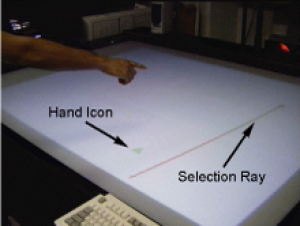Publications
Saliency of Interest Points under Scale Changes
Interest point detectors are commonly employed to reduce the amount of data to be processed. The ideal interest point detector would robustly select those features which are most appropriate or salient for the application and data at hand. There is however a tradeoff between the robustness and the discriminance of the selected features. Whereas robustness in terms of repeatability is relatively well explored, the discriminance of interest points is rarely discussed. This paper formalizes the notion of saliency and evaluates three state-of-the-art interest point detectors with respect to their capability of selecting salient image features in two recognition settings.
@inproceedings{hall2002saliency,
title={{Saliency of Interest Points under Scale Changes.}},
author={{Hall, Daniela and Leibe, Bastian and Schiele, Bernt}},
booktitle={{BMVC}},
pages={1--10},
year={2002}
}
Computer Vision-Based Gesture Tracking, Object Tracking, and 3D Reconstruction for Augmented Desks

The Perceptive Workbench endeavors to create a spontaneous and unimpeded interface between the physical and virtual worlds. Its vision-based methods for interaction constitute an alternative to wired input devices and tethered tracking. Objects are recognized and tracked when placed on the display surface. By using multiple infrared light sources, the object’s 3D shape can be captured and inserted into the virtual interface. This ability permits spontaneity since either preloaded objects or those objects selected at run-time by the user can become physical icons. Integrated into the same vision-based interface is the ability to identify 3D hand position, pointing direction, and sweeping arm gestures. Such gestures can enhance selection, manipulation, and navigation tasks. The Perceptive Workbench has been used for a variety of applications, including augmented reality gaming and terrain navigation. This paper focuses on the techniques used in implementing the Perceptive Workbench and the system’s performance.
@article{starner2003perceptive,
title={{Computer Vision-Based Gesture Tracking, Object Tracking, and 3D Reconstruction for Augmented Desks}},
author={{Starner, Thad and Leibe, Bastian and Minnen, David and Westyn, Tracy and Hurst, Amy and Weeks, Justin}},
journal={{Machine Vision and Applications}},
volume={14},
number={1},
pages={59--71},
year={2003},
publisher={Springer}
}
Previous Year (2001)

